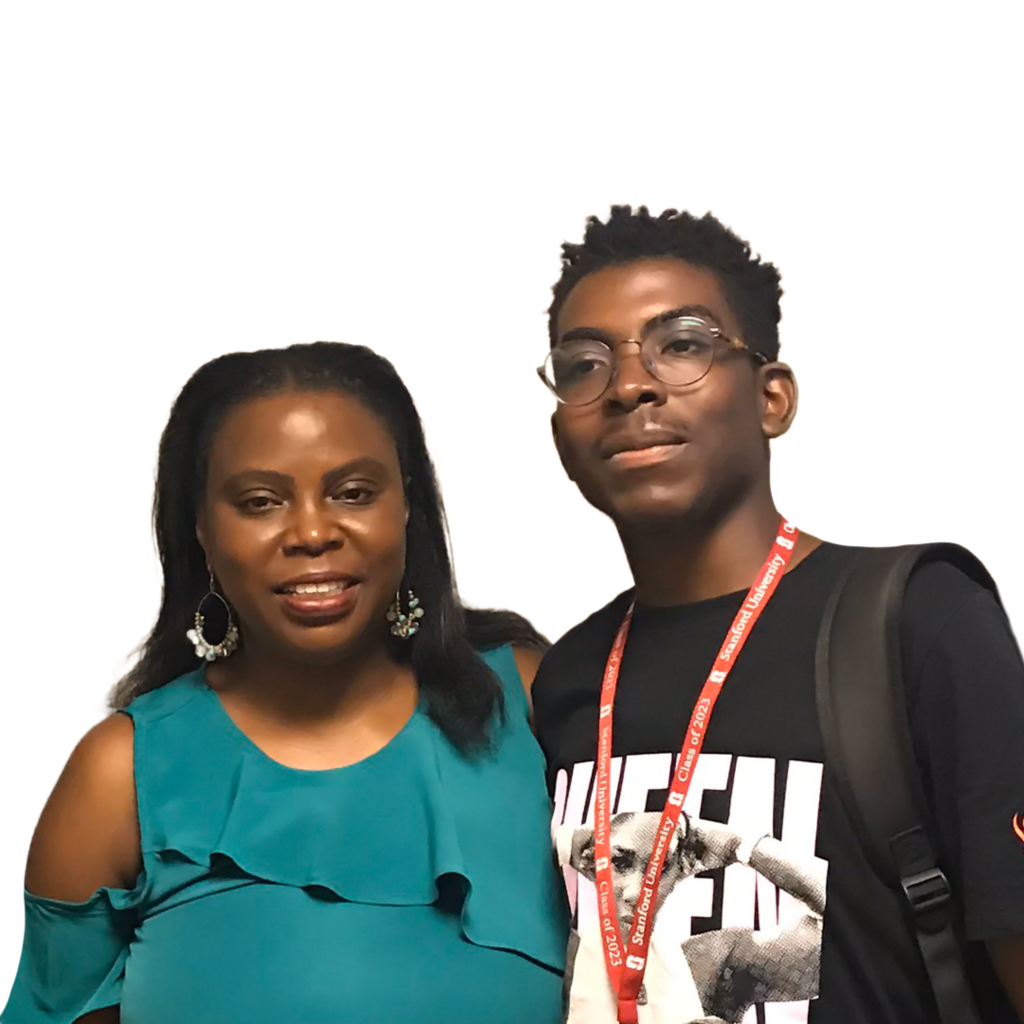
We were offered counselling, as well as the option to test the womb to find out what the chances were of our child having sickle cell. Some people I knew chose to have an abortion when they found out they were positive, but we said it was not an option.
We’re both Christians, so saw this as a wonderful chance to put our faith in God and decided that we would not go through with the test.
By the time Tamilore was born, there were more minorities in the UK population, so they did more automatic tests for the sickle cell trait, which was great, so we got him one and didn’t think much more about it.
I remember a few weeks later, after Tamilore was born, a nurse came to the house with the results of Tamilore’s test, which confirmed he had sickle cell disease. I was by myself as my husband was at work and I just broke down crying.
The nurse was very nice, and she told me it would be OK and that there was medication now that meant people with sickle cell disease could live a long, fulfilled life. But obviously I was devastated, I couldn’t even speak – I just kept thinking that my child was going to die.
I think it was the first time in my life that my heart had been really broken.
Following Tamilore’s diagnosis, we had a terrible experience to begin with as the local hospital was not well prepared to deal with the disease.
We visited the hospital every six months for a consultant appointment, and we thought he was fine, but at 18 months Tamilore just stopped walking and started crawling, although he showed no sign of distress. The hospital suggested he was having some sort of leg crisis, but it went on for quite a long time, around 6-8 weeks, until he started walking again.
However, when he was 3-4 years old, he started having regular arm and leg pains, which we managed with pain relief and massaging. We would go back and forth to the hospital but there was always a lot of confusion on how to treat him.
So, I did a lot of research and discovered there was a dedicated sickle cell unit at a hospital a bit further away, where the paediatrician wrote papers on sickle cell disease.
The next time Tamilore was ill, we took him to this other hospital and honestly, it was a revelation. They didn’t waste time doing chest x-rays like in the past; they just knew what to do.
The consultant was actually a woman from Nigeria who worked on the sickle cell ward, so she understood the wider stigma around the disease. Culturally, the stigma around sickle cell disease is awful.
When I first found out, I was ashamed and felt irresponsible, even though I had not known I was a carrier. I thought people would judge me and I felt like I had to explain to everybody the circumstances, so they didn’t think I was irresponsible.
In addition to the cultural implications, we continued to struggle with our local hospital not understanding the needs of sickle cell disease.
A week before Tamilore’s 5th birthday, he was admitted to our local hospital where they spent days testing him until eventually he got worse with breathing difficulties and a doctor realised he had pneumonia. He told us that if they didn’t intubate him immediately my son would go into respiratory failure.
On his 5th birthday, he had to be rushed to intensive care via ambulance to another hospital for treatment for the build-up of fluid in his lungs which had caused them to collapse.
After this major incident, Tamilore started taking hydroxycarbamide. When they first suggested it, I just thought “no way”; all I knew was that it was a drug used for leukaemia, and when I went online, loads of people were saying not to take it – some even suggested that it caused leukaemia. I thought that if adults were against it then how can I give this to my five-year-old child? But we had friends who are doctors who helped us understand the benefits, so we decided to give it a try. They increased it very slowly over a couple of years until they got to a dose that made an impact.
By the time Tamilore was seven, the hydroxycarbamide had transformed his life. People say it doesn’t work, but I did my own research, and it has been proven to help people with sickle cell disease and it certainly transformed Tamilore’s life for the better.
After this breakthrough, Tamilore was more able to live his life as normally as possible and strive to be the best he could be.
Even though he would miss an average of four weeks of school a year, the hydroxycarbamide helped him manage his illness better, so I was able to do lots of work with him even when he was poorly.